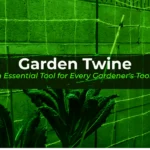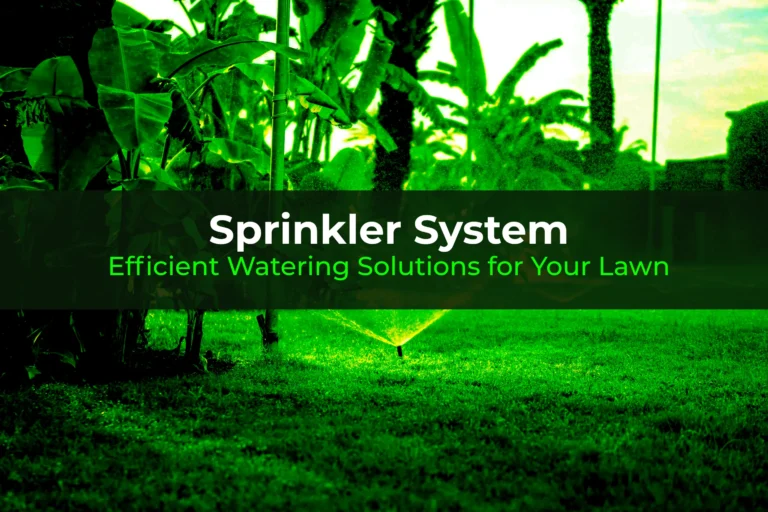
Weed Pullers: Essential Tool for Effective Garden Care
Discover how a Weed Pullers Essential Tool for Effective Garden Care can simplify your landscaping and garden care, ensuring a beautiful, weed-free garden with minimal effort. Learn tips and benefits now.
Introduction
Landscape is one of the elegance in a beautiful home that needs constant management and proper equipment. Of these, the Weed Puller Essential Tool for Effective Garden Care is particularly an effective tool in performing maintenance work on a garden.
Any gardener would know that weeds are actually increasingly becoming a major problem for any garden and this because they always vie with the plants for the nutrients, water, and light. Failure of controlling weeds, results to overgrow on the garden, poor growth of plant and architectural artwork and unattractive outlook of the garden.
In this article, Weed pullers shall be defined, types of pullers, advantages, how to use the pullers, and other crucial points to note shall be discussed. At the end of the article, you will be equipped with much-needed knowledge about a weed pullers and how it can be of great help to you in managing your landscaping or garden business.
Understanding Weeds
It will be pertinent to define weeds first and explain why weed pullers are absolutely useful before going into the details of the mechanism of those contraptions. They are unwanted plants that grow competitively and rapidly to such a level that they replace the other wanted plants easily. Such plants can be yearly, two-yearly or more and they can be of different forms and colors. Some of the most familiar weeds are annual and perennial weeds, such as dandelions, crabgrass, chickweed, and thistle. Given their ability to grow in different soil types, weeds are usually a thorn in the flesh to agriculturists or gardeners since they are stubborn and difficult to weed out.
Importance of Weed Control
Effective weed control is crucial for several reasons:
- Plant Health: Weeds themselves are the intruders who occupied the place where the garden plants are expected to grow and develop; they strive for water, nutrients and sunlight as well. This competition hampers the possibility of your plants growing big and yielding good fruits and crops.
- Aesthetic Appeal: Any garden, lawn, or yard that has beaten the grass into a jungle looks abandoned and unkempt. This process is important as it ensures you get rid of unwanted ‘invaders’ that could spoil the beauty of your garden.
- Disease Prevention: It is worth noting that weeds support pests and diseases which may-compete for with your garden plants. By identifying weeds, measures can be taken to control them, hence minimizing on the probable pest and plant diseases.
- Ease of Maintenance: Weed control must be done constantly so that less weeds go to produce more seeds and spread throughout the garden that requires much work on removing the weeds when they are established.
Types of Weed Pullers
The many weed pullers that are on the market have been developed to accommodate particular types of weed and garden situations. Here are some of the most common types:Here are some of the most common types:
Hand Weed Pullers: These are compact tools designed for use in small gardens and tasks such as weeding the garden. They are particularly suitable in eliminating plants that have shallow root systems. Examples are diggers that feed on dandelions and weeders that specialize in fishtails.
Stand-Up Weed Pullers: These tools help you to get rid of the weeds without flexing your back or your knees thus putting less stress on our backbone and knees. They are normally cumbersome and have some sort of clamp-action handle that allows the user to grasp and extract the weeds right down to the root. There are several models available in the market and two of the most popular are the Fiskars Uproot Weed and Root Remover and the Grampa’s Weeder.
Weed Puller Trowels: These are orb-like implements that share features of both a trowel as well as a weed puller. The advantage of the existing types of glufosinate is that they are appropriate for such purposes as eradicating weeds in confined areas and in close proximity to tender plants.
Weed Puller Hoes: These tools have an elongated threaded spike that is positioned sideways across the top of the root and cutting blade that slices through the weed roots at or slightly below the soil surface. These are suitable for use in large areas within gardens and are versatile and can be used for weeding purposes as well as for turning the soils.
Electric Weed Pullers: These are actually large powered tools meant specifically for serious and intensive weed removal tasks. They either utilize an application of heat or mechanical action to exterminate or eradicate weeds. That said, they’re commonly slightly more efficient, albeit costing more and needing electricity to power them.
Benefits of Using a Weed Puller
Using a weed puller offers several advantages over other weed control methods:
- Efficiency: Weed pullers are not general-purpose tools meant for soil cultivation, but rather tools that are specially tailored to remove weeds as fast and as effectively as possible. These methods help you to control where the combs are applied, thus guaranteeing that the weed is eradicated and it is not capable of growing again.
- Environmental Friendliness: This is better than using chemical herbicides that affect the soil by introducing chemicals into it negative for plant growth. This makes them an organic method of managing weeds so as to eliminate their competition hence helping in maintaining the good health of the soil and supporting the good organisms in the soil.
- Physical Ease: Some models of weed control involve stand-up weed pullers and ergonomic designs which do not exert much force for the efficient control of weeds and therefore gardeners, young and old as well as those with, challenged limbs can control the weeds effectively.
- Precision: Weed pullers can remove weeds selectively without damaging other farm produce and also very reliable. This is especially because the area is highly covered with planted gardens or in leased areas with flowers and vegetables.
- Cost-Effectiveness: A good quality weed puller therefore is fairly cheap once bought, although this does not take into consideration the cost of maintenance, but since it may last for several years, it is still cheaper than having to buy the chemical weed killers repeatedly.
How to Use a Weed Puller
Using a weed puller is straightforward, but proper technique can enhance its effectiveness. Here are the steps to follow:
- Identify Weeds: The first step should be to know the weed you intend to eradicate from your garden. This assists in making the right decision as to which particular type of weed puller to make use of and that will guarantee weed elimination.
- Prepare the Soil: If the soil is firm and compact, it might be beneficial to use the watering can and apply a little water to the soil. This enables one to uproot the weed including its root system without the need of technologies such as herbicides.
- Position the Weed Puller: To use the stand-up weed pullers safely and effectively, for the prongs or the blade of the stand-up weed pullers, make sure that the center of the tool is around the base of the weed.
- Insert the Tool: Plug the weed puller into the ground up to the level where the roots of the weeding plant will be pulled out. Hand weed pullers should be inserted under the root system with the teeth at about an angle.
- Remove the Weed: To do this you need to pull the weed using the lever or pulling mechanism which you’ll get to remove it from the soil. This root causes and radical treatment to ensure that regrowth is excluded, must be eradicated right from the root.
- Dispose of Weeds: After the elimination process, dispose the weeds that were pulled out. The collected weeds should be disposed properly. Some weeds need to be pulled out due to the fact that they can re-grow or eject seeds and therefore they should not be left on the ground.
- Inspect and Repeat: Once the weeds have been pulled out, do take a moment to observe the area to be sure that no trace of it remains. If there are other weed types in the farm go through the same process for that specific weed type.
Maintenance Tips for Weed Pullers
To keep your weed puller in good condition and ensure its longevity, follow these maintenance tips:
- Clean After Use: You’ll need to wash out your weed puller regularly to rid it of soil, debris, as well as remnants of plants that your pet may find interesting. This he says keeps it free from rust and in the right condition for use by the user at all times.
- Sharpen Blades: Check if you possess a weed puller with blades, sharp it periodically to enhance pull off efficiency. I also found that if the blades have lost their sharpness, it will become even harder to achieve nice clean weeding.
- Lubricate Moving Parts: If the weed puller has movable assemblies, including levers or a pivoting head, make sure to apply some lubrication to the parts to facilitate easy usage.
- Store Properly: Proper storage of your weed puller should be preserved well to avoid instances when it would rust or be damaged. After using it, do not bend it or make use of it for any other non-designated purpose; instead, hang it up or store it in a tool rack.
- Inspect for Damage: It is always wise to check on your weed puller frequently and determine if it is due for some repair or replacement. If there are any frayed, faded or rotten parts for whatever reason, try to swap them with new ones so that it works again as usual.
Weed Puller

Conclusion
A weed puller is, therefore, an invaluable equipment that should not be missing in any garden and landscape. Subsequently, it holds efficacy in the use of controlling weeds, and as a result helps in enhancing the health and aesthetic qualities of the garden. Depending on the space of the garden that you have, from a small protected backyard area to a wide and varied landscape, there are weed puller options available in the market that can be used effectively. To summarize, purchasing a good weed puller and employing the guidelines described above should help you free up several hours of your valuable time, while providing you with the weed-free garden of your dreams.
FAQs
1. What is a weed puller?
A weed puller is tool that is used for weeding since it is a garden implement that pulls weeds out of the ground. The weed puller is in two varieties, namely the hand weed puller, stand up weed puller and the electric weed puller.
2. How does a weed puller work?
A weed puller is typically designed to be used by hand and the principle of operation involves holding the weed/crop and root and pulling the same from the ground. This means that the whole of the weed, even the root, is pulled out and thus minimal chances of the weed growing again.
3. What types of weeds can a weed puller remove?
The weed puller can pull many types of weeds such as annual weeds, biennial weeds, and perennial weeds without pulling out many plants as well as young weeds and mature weeds like thistles. It may however depend on the type and design of weed puller and the type of weed that is being tackled.
4. Are weed pullers eco-friendly?
Yes, weed pullers can be considered as environmentally friendly because they use mechanical rather than chemical means for weeds removal. They contributed to the management of weeds without the use of chemicals thus maintaining the health of the soil and other useful organism in garden.
5. Can I use a weed puller in all types of soil?
With reference to fallow land characteristics, weed pullers can be used in consequently all types of soils, with differing efficacy. If the soil is extremely hard or compressed, there is also some benefit from wetting the area in advance, although this often creates a difficult task for weed eradication.
6. How often should I use a weed puller in my garden?
The use of a weed puller is determined by the nature of the weed growth within the garden area that requires attention. For weeding, one should weed his or her garden at least on a weekly basis especially during the growing season since weeds can also grow fast and take control.
7. Are there any alternatives to using a weed puller?
Weed management other than mechanical removal can be done through hand removal, mulching, weeding, and through chemical weed control. Every method has its own advantages and drawbacks, but a weed puller provides an accurate and gentle approach.
8. Can a weed puller damage my garden plants?
Most weed pullers are designed to be gentle to your garden plants in order not to harm them when pulling the weeds. They enable selective removal of weeds through directing steam jets in a manner that does not affect beneficial plants. Though, close working proximity is dangerous to the plants and flowers especially those sensitive ones which have rather shallow and weak root systems.
9. How do I choose the right weed puller for my garden?
Select a weed puller with a consideration of the garden area, the nature of the weeds and personal weight. Stand-up weed pullers are effective on large areas as well as on gentle terrain, and they minimize the physical effort for weed removal, while hand weed pullers are used for small gardens when the weeds are small and localized, and great attention to the area to be cleaned is required.
10. Is it necessary to clean my weed puller after each use?
Indeed, washing the weed puller after every session of use is crucial since rusting of this tool will significantly reduce its functionality and durability. Rinse the tools with clean water and always wash away all soils and plant debris after every use.
When done on a regular basis the utilization of the weed puller is a good practice to form in order to earn the reward of a well tended to garden without much work. The tool is not only practical in the sense that it makes weed management easier but also has an impact on the whole process of gardening.
About Lawn Movers Guide
Interesting Posts


The Benefits of Using a Cylinder Mower for Your Lawn

Top String Trimmers 2024: Best Picks for Every Yard



Soil Moisture Meter: An Accurate Garden Monitoring Tool
Twenty years from now you will be more disappointed by the things that you didn’t do than by the ones you did do.
- Mark Twain Tweet

Lawn Aerator | Improve Your Lawn’s Health & Appearance


Fertilizer Spreader: Enhance Your Lawn’s Health Today
